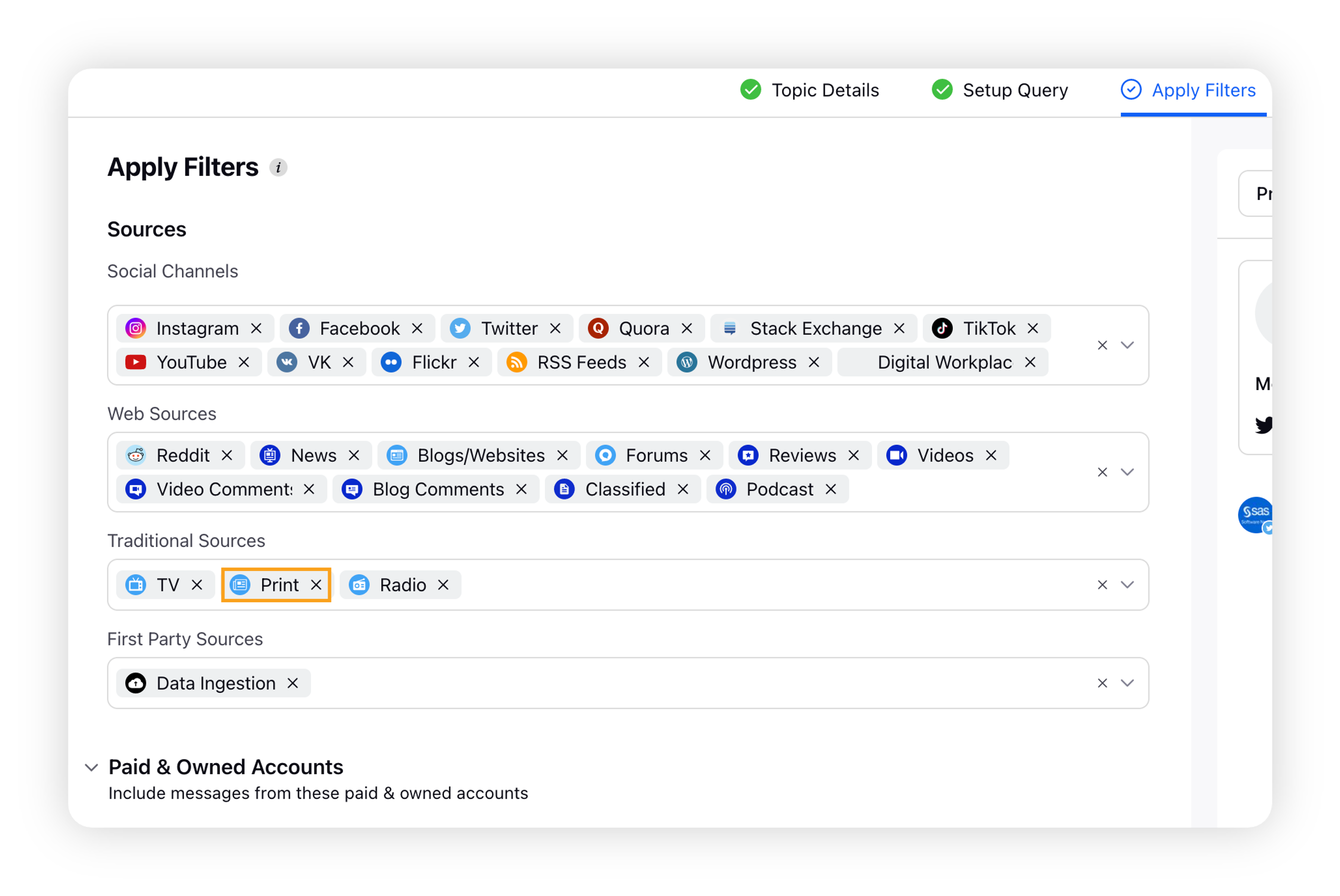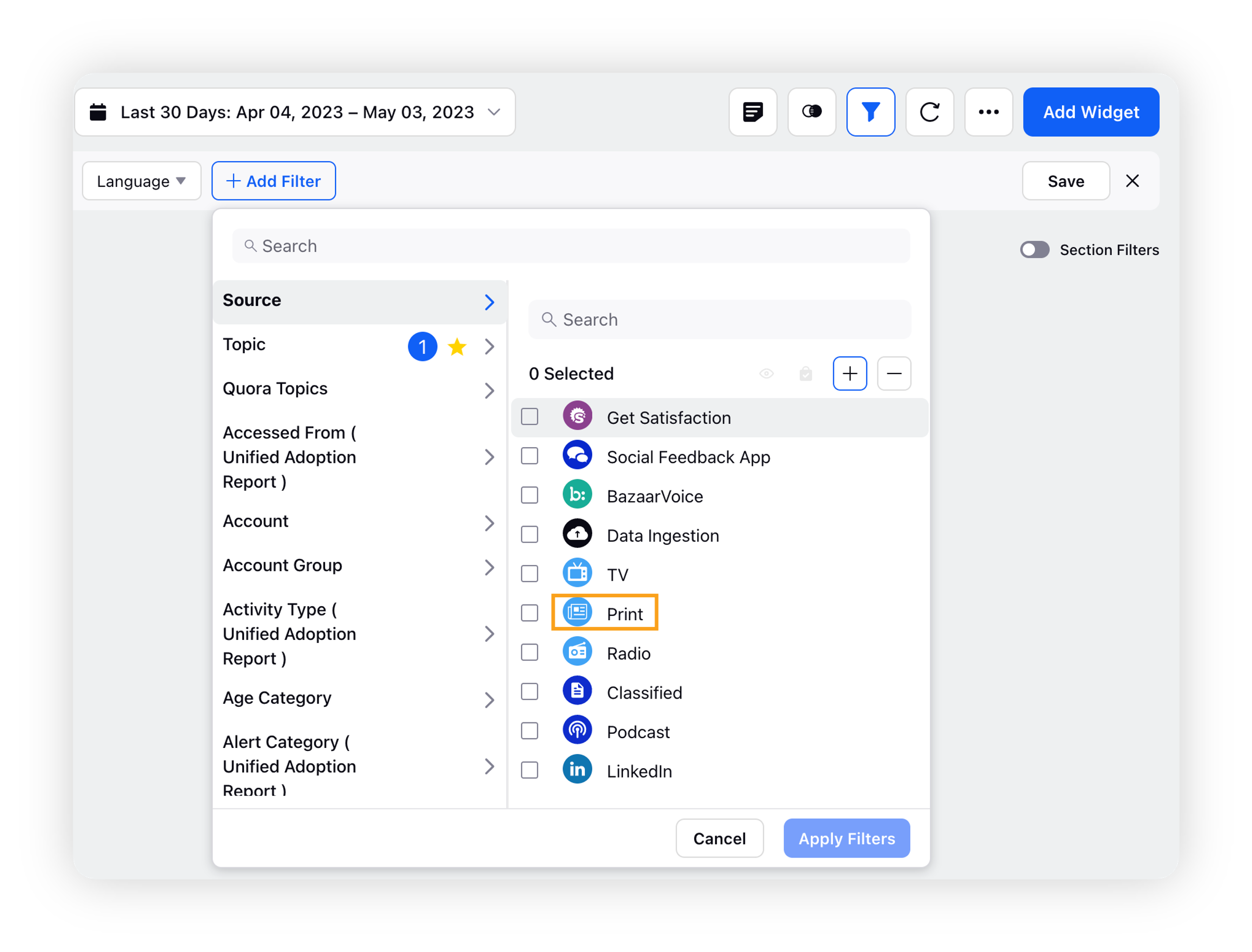Print as a Listening source
Updated
By adding Print as a Listening source, you can listen to and learn from print data.
Print is what goes to newsstands in the form of the newspaper every morning and is delivered to more than 2.5 billion consumers of print news. Print media is important because it creates credibility. Investing in printed material signals to customers that you are serious about your business and that you offer a worthwhile product or service
Sprinklr has coverage of 13000+ global print sources across 175+ countries.
Top domains covered: American Banker, CNN Wire - Espanol, Al Riyadh, The Boston Globe, The New York Times, The Washington Post, USA Today, China Daily, Gulf News, and more.
Print source capabilities
Source: Print
Source of data: LexisNexis
Coverage: We cover 13000+ global print sources across all geographies
Latency: Less than 24 hrs
Historical data: Q3 2014
Backfill support: Yes
Engagement Stats Refresh Rate: Not updated
Author/Profile metadata details: Yes
SenderScreenName, SenderListedName, Sender Gender
AI-enriched data: Sentiment, Emotions, Language, Word cloud, Topic Cluster, Gender (profile), Smart Themes Clustering, Smart Insights
Message type: Print News
Media type: Print, Status, Link, Photo
Print data entities in Social Listening
Print supported data entities
Data Entities | Type | Description |
Media Reach | Metric | A measure of the size of the potential audience of a message |
Media Source Name | Dimension | Name of the Media Source |
Media Title | Dimension | The title of the Print |
Media Source Category | Dimension | It describes the type of publishing an article is from. A source can have only one value, applied to all articles that come from that source. For more information, see – Supported Media Source categories. |
Editorial Rank | Dimension | Ranking of the media source based on its presence such as International, National, etc. The scale of ranking is from 1 to 5. Refer to this KP Article for more information. |
EMV | Metric | EMV stands for Earned Media Value. EMV is dependent on four factors namely –
If any of the above is not available for a particular domain, the value is estimated as zero. |
News supported location stats
Data Entities | Type | Description |
Country | Metric | The user-provided or Sprinklr-identified country of origin of the message. |
State | Metric | The user-provided or Sprinklr-identified state of origin of the message. |
To fetch data from Print
In order to fetch data from Print, you need to create a topic with Print as its source.
While creating or editing your topic, click the Apply Filters tab, and select Print as one of the Traditional Sources.

You can also select Source: Print from the dashboard/widget filter.

To learn in detail about how to create a topic, refer to Create a Topic in Topic Creation UI.
To backfill data from Print
To know more about how to backfill data, refer to Listening Backfill for Topics.
Limitations
Location stats (Country and State) are also provided by the vendor so it will be available on messages only if it is provided by them.
No new sources can be added to the coverage (via SV or any other way) because we receive a fix set of Print/ Broadcast data from our data vendor.
Addition of new sources to Print/ Broadcast requires our vendor to initiate conversations with the Publisher (one to one) and it may take months just for one publisher to tie-up with the vendor (due to legal, pricing negotiations, willingness to share data extracts). Hence, it is not feasible to add new sources.